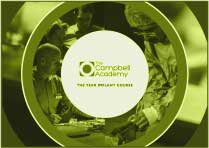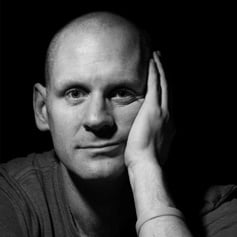
If you ever want to interact with this blog, you can leave a comment below; I always get them, always see them, and don't always reply - I'm sorry, but I try at times to reply to individual correspondence.
You can also hit reply, which will come into my inbox.
I will see it and read it, but again, I might not be able to reply.
It means no one else will see your reply, though, so sometimes hitting it to the inbox lets you reply personally, although I always reckon it's best if everyone can see the discussion.
With that in mind, I decided to do a little bit more on compartmentalisation today, just after some responses I had to the blog yesterday.
One of our regular correspondents was asking me how long it takes to set up my week on Asana, but first of all, maybe a little story about compartmentalisation and how it doesn't stop you from reflecting on the past or the things that have happened, it just allows you to put things in a box and not anticipate the stress going forward.
I'm going to take you back to what I think was 1997.
As a junior, I was working at Derby Royal Infirmary in head and neck surgery. I'm in a side room of the clinic, just a patient and I; it's a lady. I'm going to tell you that she's 32 years old, and I can remember her name, but I'm not going to tell you that.
I'm going to tell you that she is sobbing, raking deep visceral sobs, crying her heart out, and she says to me, "I hope you never reach a stage where you know you'll never see your Children grow up".
She was in her early thirties, and she was dying of cancer, for whatever reason, I had been put in the room with her that day just to keep her occupied until the consultant and the Macmillan nurse got there.
It was around exactly that time that I realised that I couldn't be a head and neck surgeon anymore because I would never be able to compartmentalise that level of emotional distress.
I think I came home and told Alison that I wouldn't be able to do that. I think that's when I decided to have a year in practice to see what it would be like.
If you fast forward from that time, about 27 years, my wife Alison has been working with Children with cancer for all of that time, regularly dealing with palliative care situations, and regularly guiding families through the loss of a child.
I still don't think I would have been able to compartmentalise that well enough. I understood that at the time.
I did, though, understand that I did not have the skill to leave my emotions at work. I knew that I would always bring that stuff home, and I knew I needed to be better at it.
And so, when I ended up fighting through a terrible, horrible, traumatic GDC case back in around 2014, I forced myself to learn the skill of compartmentalisation.
One of my best friends in the whole world, Craig Wales, who did go on to be a head and neck surgeon, told us a story at one of our failure conferences about how he had to remove someone's eye in surgery because they had cancer and then when the pathology report came back, they said they didn't have cancer.
It was the greatest showstopper of a lecture I've ever seen.
I vividly remember Craig saying that he went home distraught to his wife, who said that if you can't compartmentalise this stuff, you'll have to change your job.
It's so true.
We learn to do it, or we move to a different place where maybe it's easier, or we don't have to do it so much (me out of head and neck surgery).
So, over the years, in one way or another, since around about that time when I met the lady, I've learned how to compartmentalise things.
I think it's kind of like a muscle; you kind of train yourself to do it and talk to yourself, and when it pops up, when the thing that you're worried about, or you don't want to think about right now arises, you can push it back into its box and come back to it later.
I talk about using Asana as a management tool to help me dump my tasks in a specific place and then organise them about once or twice a week.
Asana is a high-level, expensive project management tool we use in practice for various tasks, but you don't need anything that sophisticated.
It allows you to dump thoughts in there as they come up, rearrange them, and drag and drop them into the places you want to see.
If you've got a slot that's free later on in the week, you can assign things there.
Suppose you've got to have conversations with someone and want to remember what you're talking about. In that case, you can make a few notes on Sunday or Monday, chuck it into Thursday and then forget about it until about 10 minutes before you're having the conversation and then open it again.
It saves me from carrying all of these things about in my head, allowing me to note and forget and then remember when it's time to remember.
One of the correspondents about compartmentalisation had asked if it affects my ability to reflect on things, but I don't think that's true either.
It's not as if you open the box, shut the box, open it again for your function and shut it again; anything that you want to consider or want to think about will be retained in the front of your mind.
Also, when you go back to finishing off the tasks and ticking them off, you can decide if you want to take anything further or if you want to reflect on it better.
I think the whole compartmentalisation thing is just one possible tool which can stop you from living in a world of being frightened of the things that are coming in the future and therefore affecting the quality of what you're doing now but, more importantly, the contentment and enjoyment of where you are right this minute.
Blog Post Number - 3970





Leave a comment